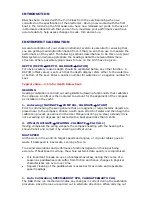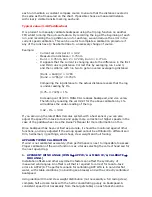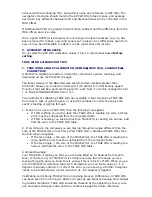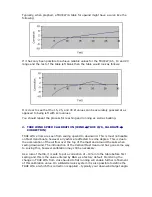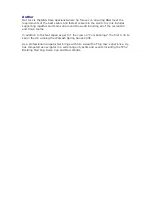
each run maintain a constant compass course to ensure that the distance covered is
the same as that measured on the chart. If possible choose a measured distance
with clearly visible transits marking each end.
Typical value: 3.48 Paddlewheel
It is prudent to manually calibrate boatspeed using the trip log function on another
FFD whilst running the auto cal feature. By recording the log at the beginning of each
run, and recording the log distance run for each leg, we can deduce the error in the
current speed calibration. This can be useful to complete a calibration procedure if
any of the runs have to be aborted due to a necessary change of course.
Example:
-
Current cal in Hz per Kt = 3.42
-
Measured run distance = 0.75nm
-
Run 1 = 0.76nm, Run 2 = 0.72nm, Run 3 = 0.77nm
-
It appears that the current is changing due to the difference in the first
and third runs Log distance. Correct this by averaging run 1 and 3,
and then combine with run two to get an overall average log distance:
(Run1 + Run3)/2 = 0.765
(Run2 + 0.765)/2 = 0.7425
Comparing the log distance to the actual distance reveals that the log
is under-reading by 1%
(0.75– 0.7425) = 1%
Increasing cal Hz/Kt in MANL CAL reduces boatspeed, and vice versa.
Therefore by reducing the cal Hz/Kt for the above calibration by 1%
will address the under-reading of the log.
3.42 - 1% = 3.39
If you are using the latest B&G Hercules system with a heel sensor you can also
adjust the speed from tack to tack and apply more correction at higher speeds in the
case of the paddle-wheel. See the Owner’s Manual for more information on this.
Once boatspeed has been verified as accurate, it should be monitored against other
functions, and only adjusted if the wrong speed cannot be attributed to different sail
trim, helmsman, rig settings, wind shear, crew weight and hull fouling.
APPARENT WIND CALIBRATION
If wind is not calibrated accurately, then performance is next to impossible to assess.
Proper calibration of the wind function is as vital as selecting the correct head sail for
the next upwind leg.
1.
APPARENT WIND ANGLE (WIND
→
APP W/A or MEAS W/A, CALBRATE
→
MHU ANGL)
Installation offsets and other asymmetric factors can affect the symmetry of
measured wind angles. An offset is all that is required to correct for tack-to-tack
errors in APP W/A. The perfect scenario for calibrating APP W/A is in non-tidal flat
water, with stable conditions (no building sea breeze) and with a correctly calibrated
boatspeed.
Using identical trim and crew weight distribution (not necessarily a full racing crew)
complete half a dozen tacks with the helm concentrating purely on boatspeed. A
consistent speed (not necessarily from the targets table) on each tack should be


